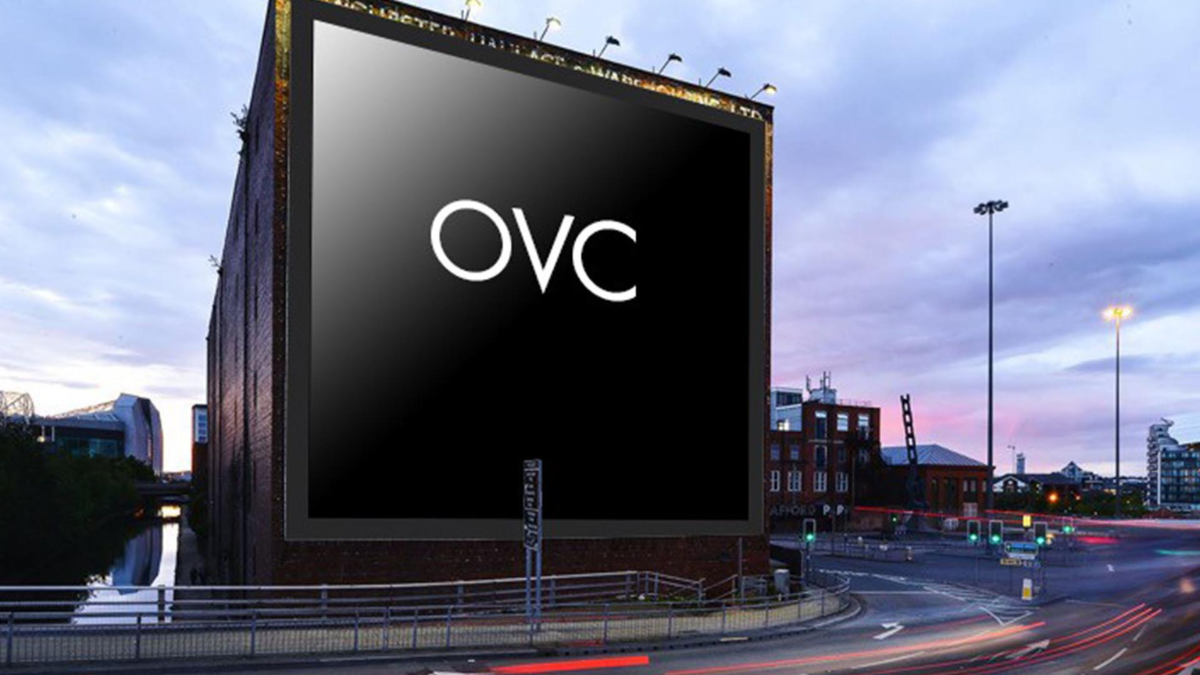With a population of around 2.6 million, Greater Manchester is the next largest conurbation in the UK outside of London
Helpfully, It seems this city rich in vibrancy and diversity is gathering momentum as the place for brands to advertise. It also has a plethora of billboards and digital screens strategically placed around the city and its surrounds. This supports the rise in popularity in ‘Out Of Home’ advertising which has seen a resurgence after being hit hard by the covid pandemic. OOH as a form of advertising in general has been increasing year-on-year since the pandemic. In 2022, it saw a 32% growth rate.
There are over 300 digital screens and billboards around Manchester, from the Oldham Road 12.1 x 3.1 square metre subtle motion screen, in the Ancoats part of the city (which reaches over 5 million eyes per month) to the Trafford Wharf Road, which is the largest digital screen in Manchester (and the second-largest screen in Europe). At 17.4 x 17.6 square meters it reaches 2 million eyes per month, and overlooks a major traffic junction next to the Manchester United stadium.
Craft Media London has been utilising the reach that Manchester has for some time. We facilitated Pizza Express’ new brand launch in the North West, paying close attention to the power of brand comms. A lot of rigour went into building a detailed measurement framework. By delving into who the demographic was, their behaviours and where we could reach them, we were able to target the right locations and get their messaging out for the maximum effect. More recently we worked on the Glaze brand: with the demographic being mainly female, we knew that utilising outdoor digital screens in central Manchester, from Piccadilly Gardens to the Trafford Centre in the shopping quarter would be perfect.
It is fair to say that city behaviours in the UK vary significantly. This is because each city has a unique character and those living there often display distinct behaviours and attitudes which are heavily influenced by a particular city’s culture, history, demographics, economic activities, and local traditions.
So what sets Manchester apart from other cities?
Many cities share aspects of Manchester’s cultural heritage, but only Manchester envelops them all, of course. The city has a diverse heritage, known for industry, science and innovation, music and sport. It is steeped in working-class tradition, and has long been a melting pot of races and religions.
Mancunians are known for their generally strong and proud cultural identity. This is a positive for brands, because a strong cultural identity often means a more confident and open approach in consumer behaviour. For advertisers, billboards fit naturally into the city’s landscape and add to the visual diversity. They provide an effective medium for conveying messages to a really broad audience. It is also a busy bustling city and according to Transport for Manchester, more than 5.6 million journeys are made across Greater Manchester daily. It also has the UK’s third busiest airport, last year 23,364,471 passengers flew out of it. The Manchester Arndale shopping centre has 240 retailers in its central location. Therefore, It stands to reason that, for brands wanting maximum visibility, the diverse demographics and vast numbers of people in the city, coupled with some strategic and large billboards, means greater reach for companies.
Manchester has undergone significant transformation over the years, from its industrial past to its present status as a modern, cosmopolitan city. Mancunians’ ability to adapt to change and embrace new developments contributes to the city’s dynamic character and this is what makes it so successful for brands trying to reach consumers.
Featured image: The second largest digital billboard in Europe, Manchester

